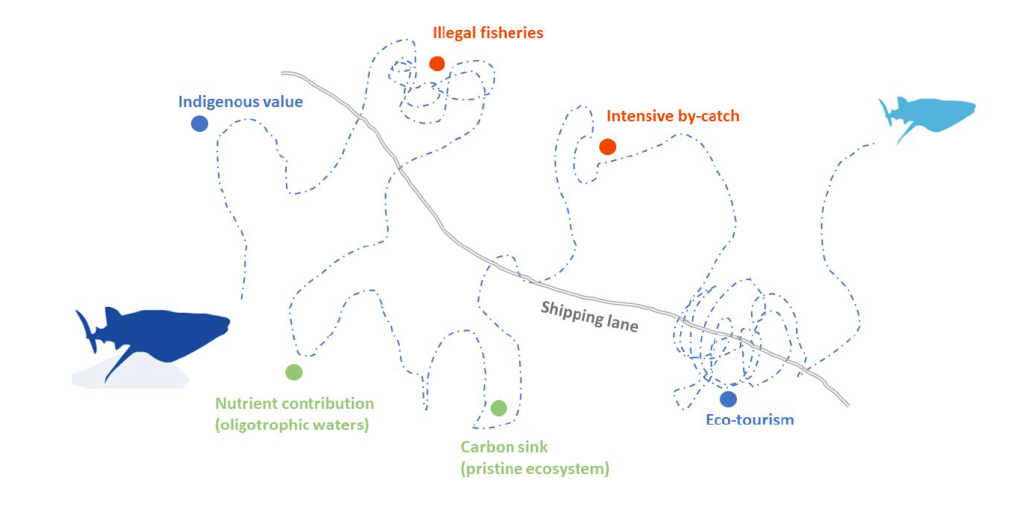The power of marine megafauna migrations: a nature-based solution for financing global biodiversity conservation
The SequeiraLab is thrilled to share that the paper “Ecosystem services ‘on the move’ as a nature-based solution for financing the Global Biodiversity Framework” led by Ana Sequeira, U. Rashid Sumaila, and Abbie A. Rogers has just been published in the journal npj Ocean Sustainability.

The SequeiraLab is thrilled to share that the paper “Ecosystem services “on the move” as a nature-based solution for financing the Global Biodiversity Framework” has just been published in the journal npj Ocean Sustainability. Written by lab lead Assoc Prof Ana Sequeira and co-authors Prof U. Rashid Sumaila and Dr Abbie A. Rogers, the paper explores the economic potential of conserving marine megafauna – whales, sharks, tuna, turtles – and how their migratory patterns can bridge the gap between the Global North and South. These marine megafauna could serve as a nature-based solution to facilitate financial support for global biodiversity conservation efforts, to meet targets set by the Kunming-Montreal Global Biodiversity Framework.
The paper emphasises marine megafauna’s critical role in providing ecosystem services, such as nutrient cycling, carbon sequestration, and supporting eco-tourism. These ecosystem services occur across multiple countries and offer an opportunity to bridge the gap between the Global North and South. The authors have proposed using the Total Economic Value (TEV) framework to quantify these services provided "on the move", which can then be integrated into a global market-based conservation strategy. In this way, these ecosystem services can be translated into a biodiversity credit scheme in which countries can earn credits for actions taken to protect marine megafauna, or face penalties for activities that affect or impact the species. There are complexities to this suggested approach, such as accurately valuing the ecosystem services across countries, contexts, and cultures. Further research and development of the necessary infrastructure to support this financing mechanism is needed. Inter-governmental collaboration is crucial, along with robust regulatory frameworks to ensure the success of market-based conservation strategies.
Thanks to Prof U. Rashid Sumaila and Dr Abbie A. Rogers for this great collaboration!
